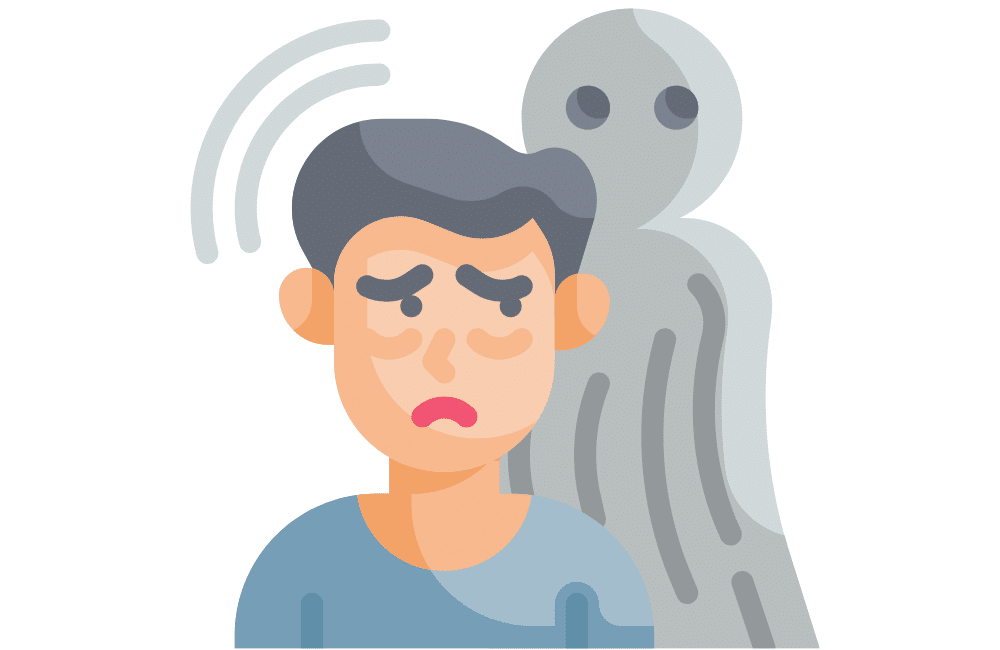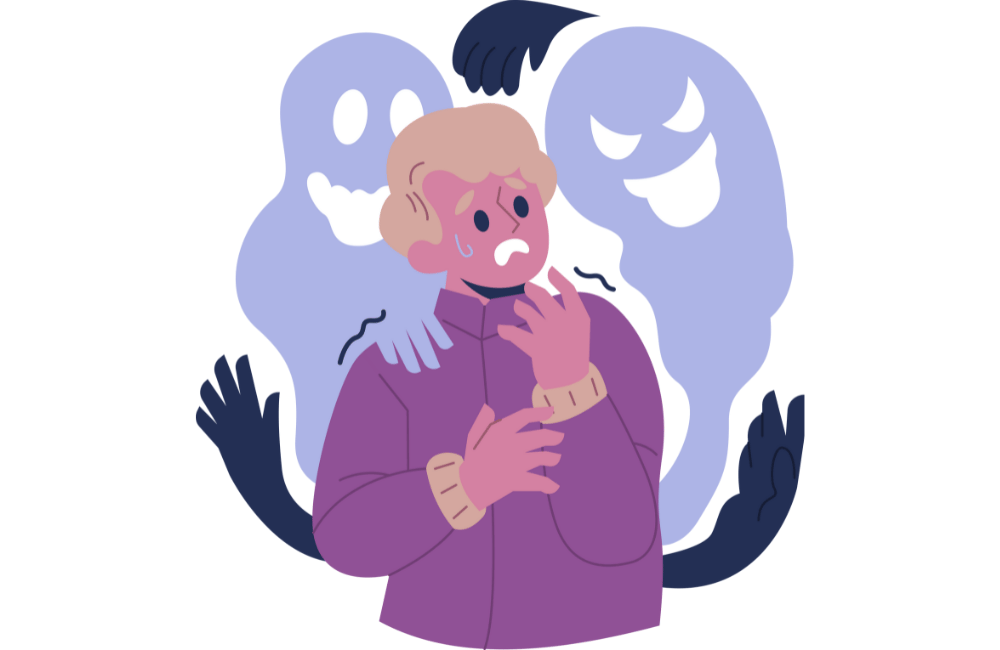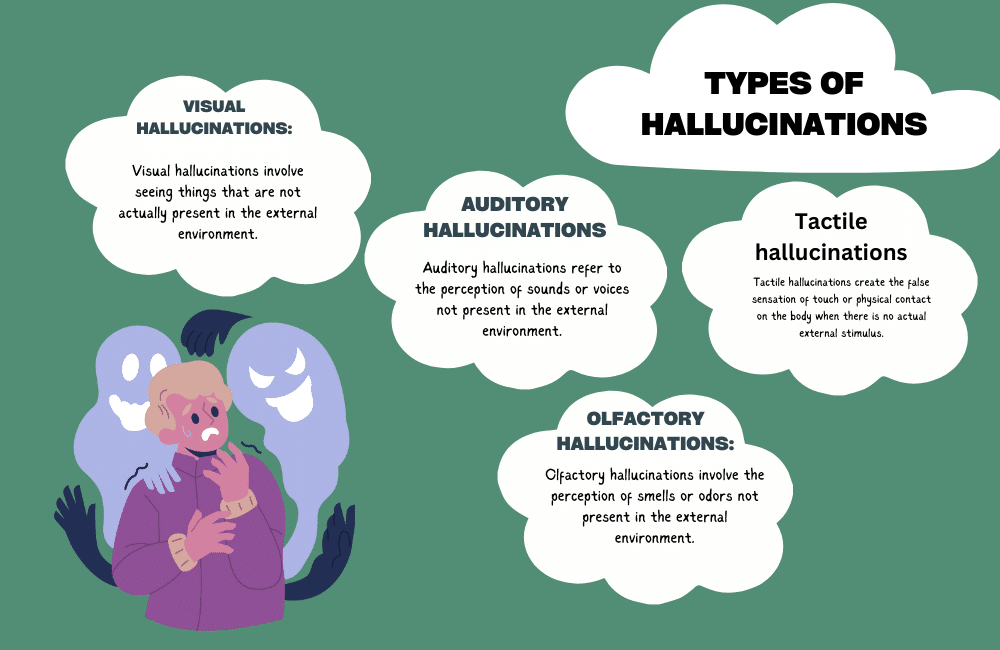In our complex and fascinating world, hallucinations represent an intriguing phenomenon that challenges the understanding of the human mind. They are intriguing and puzzling, causing people to perceive events, objects, or experiences that are not present in the actual world. To develop comprehensive strategies to avoid hallucinations, it is important to delve into what they are, the different types, their causes, and the various techniques available for managing them.

This article will provide insights into hallucinations, underlining the significance of mental health and the proactive measures that can be taken to prevent such experiences.
Understanding Hallucinations
Hallucinations are sensory experiences that seem real but are created by your mind. They can affect all five of your senses. For example, you might hear a voice, see something not there, or feel like invisible fingers are touching you. People who experience hallucinations often describe them as vivid and nearly indistinguishable from actuality.

Hallucinations aren’t merely confined to those with severe mental disorders like schizophrenia. They can also occur due to physical conditions, certain medications, or extreme stress or fatigue. Understanding this can dispel some of the stigma associated with hallucinations, encouraging more open conversation and better management approaches.
Types of Hallucinations
Different types of hallucinations correspond to different sensory experiences. The five primary categories include:

- Visual hallucinations: Visual hallucinations involve seeing things that are not actually present in the external environment. These hallucinations range from simple shapes, colors, or patterns to more complex and detailed scenes, objects, or people. Visual hallucinations can occur in various conditions, such as Charles Bonnet syndrome, a condition often experienced by individuals with visual impairments, drug use (particularly hallucinogenic substances), or as a result of sleep deprivation. In some cases, visual hallucinations can be vivid and realistic, making it difficult for individuals to differentiate between real and perceived.
- Auditory hallucinations: Auditory hallucinations refer to the perception of sounds or voices not present in the external environment. These hallucinations range from simple sounds like buzzing, ringing, or footsteps to complex voices engaging in conversations or commenting. Auditory hallucinations are commonly associated with psychiatric disorders such as schizophrenia or bipolar disorder but can also occur in conditions like severe depression or substance abuse. The voices or sounds perceived in auditory hallucinations can be distressing, commanding, or comforting, and they are often heard as if originating from outside the person’s head.
- Olfactory hallucinations: Olfactory hallucinations involve the perception of smells or odors not present in the external environment. These hallucinations can be pleasant or unpleasant and can vary in intensity. Olfactory hallucinations are often associated with conditions such as epilepsy, migraines, certain brain tumors, or even certain psychiatric disorders. The mechanisms behind olfactory hallucinations are not fully understood, but they are believed to involve disruptions or misinterpretations in the brain’s processing of smell-related information.
- Tactile hallucinations: Tactile hallucinations create the false sensation of touch or physical contact on the body when there is no actual external stimulus. These hallucinations can manifest as sensations of insects crawling on the skin, a feeling of being touched, or even experiencing pain or discomfort. Tactile hallucinations can occur in conditions such as drug withdrawal (especially from substances like opioids or stimulants), delirium, certain neurological disorders, or nerve damage. The sensation experienced in tactile hallucinations can be distressing and may significantly impact an individual’s daily life.
- Gustatory hallucinations: Gustatory hallucinations involve the perception of tastes without any external source of stimulation. This can include perceiving unusual tastes or even the absence of taste altogether. Gustatory hallucinations can occur in conditions such as epilepsy, certain brain tumors, certain medications, or due to neurological damage. These hallucinations can be bothersome and disruptive, affecting an individual’s enjoyment of food and beverages.
It is important to note that hallucinations are subjective experiences and can vary greatly from person to person. The causes and manifestations of hallucinations can be complex, and individuals experiencing them should seek professional help for proper evaluation, diagnosis, and treatment.
Causes of Hallucinations
Hallucinations can be caused by many factors, from mental health conditions to substance abuse or physical illness. Some common causes include:
- Mental health disorders: Hallucinations are commonly associated with various mental health conditions. Schizophrenia, a chronic and severe mental disorder, often involves hallucinations as one of its key symptoms. Individuals with schizophrenia may experience auditory hallucinations, hearing voices or sounds not present in reality. These hallucinations can be distressing and may contribute to the individual’s disconnection from reality. Other mental health disorders, such as dementia and delirium, can also lead to hallucinations. In dementia, hallucinations may occur as the disease progresses, while delirium, often caused by an underlying medical condition or medication side effects, can result in temporary hallucinatory experiences.
- Neurological conditions: Certain neurological conditions can cause hallucinations. Migraines, severe headaches characterized by intense throbbing pain, can sometimes be accompanied by visual hallucinations or migraine aura. These visual hallucinations may manifest as shimmering lights, zigzag lines, or blind spots in the visual field. Certain types of epilepsy, a neurological disorder characterized by recurrent seizures, can also lead to hallucinations. These hallucinations may occur during or between seizures and involve visual, auditory, or even olfactory experiences. Parkinson’s disease, a degenerative disorder affecting movement and coordination, can cause hallucinations as the disease progresses. These hallucinations often involve visual or auditory experiences and may be related to medication use or changes in the brain due to the condition.
- Substance misuse: Hallucinogenic drugs, such as LSD (lysergic acid diethylamide), PCP (phencyclidine), and magic mushrooms (containing psilocybin), can induce hallucinations. These substances alter brain chemistry and perception, leading to vivid sensory distortions and hallucinatory experiences. Additionally, withdrawal from certain substances, including alcohol or drugs, can trigger hallucinations. The brain’s adjustment to the absence of the substance can result in temporary perceptual disturbances and hallucinatory episodes.
- Sleep deprivation, stress, or extreme fatigue: Prolonged periods of sleep deprivation, high levels of stress, or extreme fatigue can contribute to the occurrence of hallucinations. Lack of sufficient sleep disrupts the brain’s normal functioning, leading to alterations in sensory perception. This can result in visual or auditory hallucinations, especially when combined with other factors such as pre-existing mental health conditions. Similarly, excessive stress or fatigue can affect the brain’s ability to process sensory information accurately, increasing the likelihood of experiencing hallucinatory phenomena. These hallucinations are often temporary and can be alleviated by addressing the underlying sleep or stress-related issues.
Preventing Hallucinations
Given the range of causes, there is no foolproof way to prevent all types of hallucinations. However, several strategies can reduce the risk and help maintain overall mental health:
- Healthy lifestyle: Regular exercise, a balanced diet, and adequate sleep contribute to physical and mental health. This can help to prevent hallucinations related to stress, fatigue, or certain health conditions.
- Avoid substance misuse: Since drugs and alcohol can trigger hallucinations, avoiding excessive consumption or misuse is best. For those struggling with substance abuse, seeking professional help can be life-changing.
- Manage stress: High levels of stress can potentially trigger hallucinations. Techniques such as meditation, yoga, and mindfulness can effectively reduce stress.
- Seeking medical assistance: Regular check-ups and consultations with healthcare professionals can help identify potential mental or physical health conditions that may lead to hallucinations.
- Medication management: For those already experiencing hallucinations due to a health condition, following the prescribed treatment plan can help manage and potentially prevent further hallucinations.
Summing Up
Hallucinations can be disconcerting experiences that disrupt normal life, but understanding them can help dispel fear and stigma. By gaining knowledge about hallucinations and their potential causes, we can be better equipped to prevent them. Implementing healthy lifestyle practices, managing stress, avoiding substance misuse, and seeking regular medical assistance can significantly reduce the risk of experiencing hallucinations. Focusing on overall mental health is paramount to living a hallucination-free life.
FAQs
How can hallucinations be prevented?
1. Maintain a healthy lifestyle: Regularly exercise, follow a balanced diet, and ensure adequate sleep to promote overall physical and mental well-being.
3. Avoid substance misuse: Steer clear of hallucinogenic drugs and limit alcohol consumption to reduce the risk of substance-induced hallucinations.
3. Manage stress: Practice stress-reduction techniques such as meditation, deep breathing exercises, or engaging in hobbies and activities that promote relaxation.
4. Seek medical assistance: Regular check-ups and consultations with healthcare professionals can help identify and address any underlying physical or mental health conditions that may contribute to hallucinations.
5. Follow prescribed treatments: If experiencing hallucinations due to an underlying condition, it’s important to adhere to the prescribed treatment plan, including medication management and therapy.
What is the most effective therapy for hallucinations?
1. Cognitive Behavioral Therapy (CBT) focuses on identifying and challenging negative thought patterns and beliefs associated with hallucinations. It helps individuals develop coping strategies and reduce distress related to hallucinatory experiences.
2. Medication: In cases of hallucinations caused by specific mental health disorders like schizophrenia, medications such as antipsychotics may be prescribed to manage symptoms.
3. Supportive therapy: Engaging in supportive therapy or counseling can provide individuals with a safe space to express their experiences, gain support, and learn coping skills to manage hallucinations.
4. Family therapy: In cases where hallucinations impact family dynamics, family therapy can help educate and support family members in understanding and responding to the individual’s experiences.

